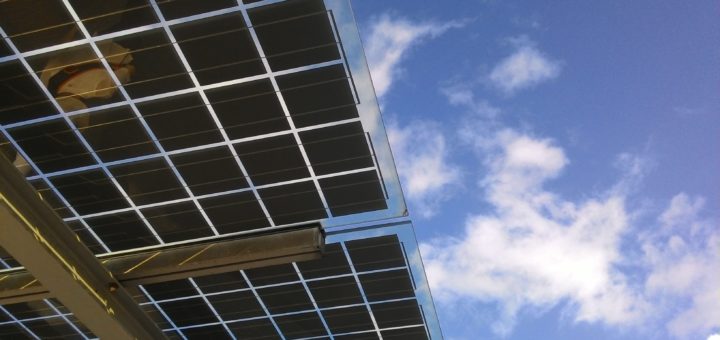Achieving a decarbonised electricity sector is difficult, the main problem lies in integrating new energy sources e.g. Renewable Energy Sources (RES) into existing energy systems. This research is focused on achieving a decarbonised electricity sector in Greece and include both generating and storing clean energy at the local level. The DREEM model was calibrated for the case of Greece and simulated for 3 scenarios. Resulting with 2 policy scenarios.
The creation of global climate targets, such as those set out by the Paris Agreement, have set a trajectory for countries to achieve carbon reductions across all sectors. Whilst there are many possible low carbon pathways, action in the electricity sector is normally seen as key to accelerate this transition.
Yet achieving a decarbonised electricity sector is difficult. The main problem lies in integrating new energy sources (e.g. Renewable Energy Sources – RES) into existing power systems. Energy storage and demand-side flexibility (i.e. the ability of consumers to adapt their electricity consumption in response to market signals) seem to be of paramount importance towards resolving existing problems.

Our research is focused on achieving a decarbonised electricity sector in Greece, based on the premise that the new electricity system should include both generating and storing clean energy at the local level. This vision of a Greek decentralised electricity system would mean that part of the future infrastructure will be developed through consumers’ direct investments in renewable generation technologies (e.g. solar PV, etc.) and/or technologies that increase demand-flexibility (e.g. electricity storage, smart grid devices, etc.).
To motivate individuals to make such investments, these technologies should become cost competitive with fossil-fuel alternatives. Competitiveness could be achieved through a reduction in their costs and/or through business models that increase their market value.
Therefore, new business models and regulations are required to find ways to maximise the value of these technologies, as well as to monetise them in order to compensate consumers for their investments. However, current regulations restrict demand-side flexibility and create conflicts of interest between consumers and other actors involved in the electricity sector.
Consequently, our work investigates the value of demand-side flexibility, when allowed to be brought in the retailing operations of the utilities. To do so, our report explores ways to couple small-scale PV with technologies that increase demand flexibility (e.g. electricity storage, smart-grid devices, as smart thermostats, etc.), and then using this infrastructure to generate additional sources of revenue for consumers.
Modelling method
Developing a Demand-Response model
First, we simulate a complete residential building environment, using weather data, building envelope properties, HVAC (heating, ventilation and air conditioning) systems, behaviour of occupants, self-consumption with solar PV and technologies that increase demand-flexibility, and thermal comfort parameters. To do so, we developed a Demand-REsponsE Model (DREEM), which is a high-resolution energy systems model, supporting the assessment of the capabilities and limitations of (residential) demand flexibility. The DREEM model was calibrated for the case of Greece and was, then, simulated for each of the following scenarios:
- Scenario 1 (i.e. Reference Scenario): Occupants consume according to their energy needs, maintaining their indoor temperature at comfort levels.
- Scenario 2: In addition to Scenario 1, this scenario explores the potential benefits of self-consumption for consumers, through the coupling of small-scale solar PV with storage technologies (i.e. batteries).
- Scenario 3: In addition to Scenario 2, this scenario explores optimal algorithmic strategies for controlling demand-flexibility and determining its value, if allowed to be brought into the market. To do so, we assume that a central planner (i.e. retailer) sends market signals (that maximize its revenues) and that consumers comply with them, according to their occupancy schedule and their energy needs.
Application of an agent-based model
Results from the DREEM model are used as input data for an Agent-based Technology adOption Model (ATOM). The ATOM model is a high-resolution model, developed within previous TRANSrisk work. This model simulates the adoption of small-scale PV amongst consumers. The model can be further developed to also simulate the adoption of other technologies that increase demand-flexibility (e.g. battery storage, smart-thermostats, etc.).
The aim of this soft-linking exercise is to explore the effectiveness of:
- A potential single self-consumption support policy (i.e. incentivising residential electricity storage).
- A coupled self-consumption – demand-response policy mix (i.e. incentivising residential electricity storage and allowing demand-response into the market)
in driving investments in small-scale PV in Greece, for the period of 2018-2025.
Results
When comparing results, as expected, the benefits for consumers come from the reduction of the electricity bought from the grid (i.e. due to self-consumption). For both Scenarios 2 & 3, at the end of each billing period, prosumers have exported more electricity to the grid than they have drawn from it. Consequently, as it is assumed that prosumers are not compensated for the excess of electricity fed to the grid under the two policy schemes of interest (as in the case for the new Net-Metering scheme currently in effect in Greece), substantial savings in terms of cost and energy are achieved.

However, results from the Scenario 3 show that incentivising residential electricity storage, coupled with a demand-response scheme, seems more financially effective and attractive than a single self-consumption scheme.
Therefore, our results indicate that by allowing for a co-operation between the power provider and the prosumer, significant cost reductions and energy savings can be achieved. If a fair allocation of these benefits is envisaged, then incentives for both of them shall arise.
In terms of the expected new PV capacity additions, under the two policy schemes of interest, our results show that:
Policy Scenario 1: A single self-consumption scheme
Compared to the results of previous TRANSrisk work, and the assumptions of the Scenario 1, our analysis show that the new Net-Metering scheme, currently in effect, is more effective than a single self-consumption scheme that incentivises residential electricity storage. However, our projections show that achieving the same PV capacity additions that the FITs scheme achieved from 2010 up to early of 2013 could take almost 7 years.
Policy Scenario 2: A self-consumption – demand-response policy mix
This policy scenario seems almost equally effective as the current Net-Metering scheme in driving investments in solar PV. This demonstrates that it would take an additional year to meet the same level of new PV capacity additions (i.e. the PV capacity additions that the FITs schemeachieved from 2010 up to early of 2013).
Conclusions
Our work has shown that flexibility to increase self-consumption can be achieved without significant changes in the current market and without consumers having to sacrifice comfort and energy services. Our research highlights also, that bringing demand-flexibility into the market increases the value of the technologies that enable this flexibility, such as electricity batteries or smart grid devices (e.g. smart thermostats, etc.).
This increased value can counterbalance the phasing out of FITs in Greece and provide a significant incentive for new consumer investments in small-scale PV. By doing so, some continuity in the benefits for renewable energy and climate goals can be obtained.
Overall, it is only reasonable to assume that consumers will adopt renewable energy technologies when they see financial value from increasing consumption of renewable electricity generated onsite. In addition, when it is financially viable to do so, consumers may also invest in technologies that increase their demand flexibility, to increase the proportion of the self-produced electricity they consume. However, transitioning to this more complex market system is not inevitable due to the significant shift in the consumers’ behaviour that it would entail.
Although the business model presented in this analysis has been developed and applied for the socio-economic and geographic context of Greece, it is widely applicable to any other European country.
About this article

This article is based on the TRANSrisk’s deliverable D6.4 ‘Achieving a low-carbon power system through empowering consumers to produce and store clean energy at the local level: The case of Greece’. This chapter was written by Vassilis Stavrakas, Sotiris Papadelis and Alexandros Flamos at the Technoeconomics of Energy Systems laboratory (TEESlab) at the University of Piraeus Research Centre (UPRC). The D6.4 deliverable is available on request.
For more information please contact authors at:
vasta@unipi.gr (Vassilis Stavrakas)
aflamos@unipi.gr (Assoc. Prof. Alexandros Flamos)
or find them at:
This article was written by Ed Dearnley and Ellie Leftley at SPRU (Science Policy Research Unit) at the University of Sussex and by Vassilis Stavrakas at TEESlab UPRC. For more information about TRANSrisk please visit our website.
Photo credits
Photo 1: Photography licensed under Creative Commons CC0.
Photo 2: Photo by Marufish, licensed under Creative Commons (CC BY 2.0).
Photo 3: Photo by Marco Verch, licensed under Creative Commons (CC BY 2.0).
TRANSrisk
Project details
- Project title: “Transitions Pathways and Risk Analysis for Climate Change Mitigation and Adaption Strategies” (TRANSrisk)
- Funding scheme: European Union Horizon 2020 Programme (EU H2020, grant agreement no. 642260)
- Duration: 3 years (1 September 2015 – 31 August 2018)
- Project coordinator: Science Policy Research Unit, University of Sussex, United Kingdom
- Project website: www.transrisk-project.eu


